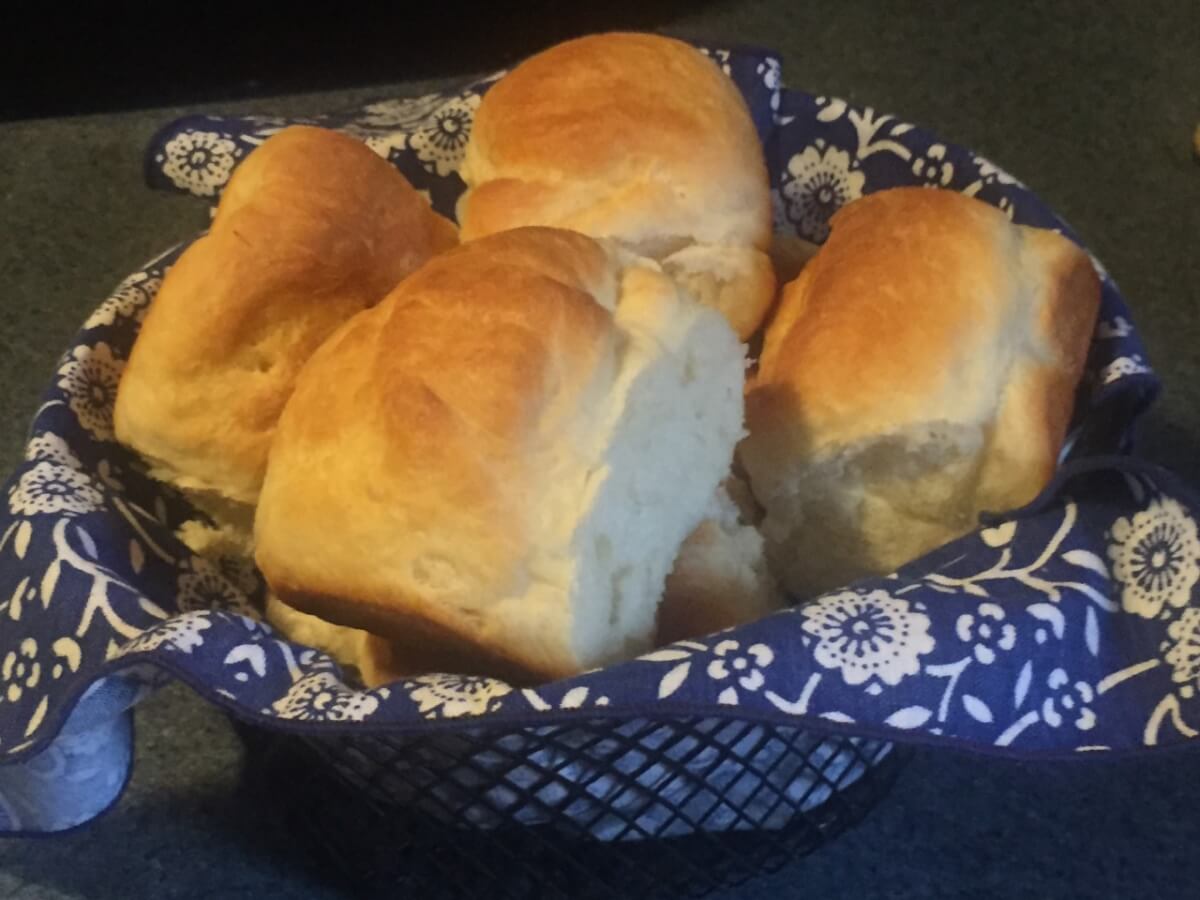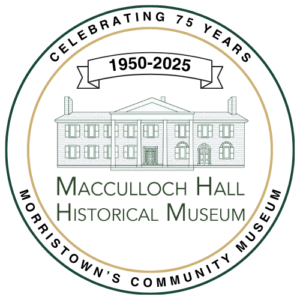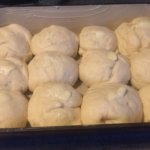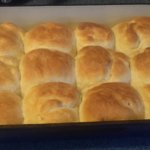Throughout the 1800s the Macculloch Miller family enjoyed fresh homemade breads and rolls made in their beehive oven, the outline of which is still visible on the exterior wall of the historic house. Thankfully, these bread and roll recipes were recorded by Louisa Macculloch (1785-1863) and other family members in a handwritten family cookbook.
In the adapted recipe below it is recommended to mix the dough by hand rather than using the dough hook on a stand mixer. It is also interesting to compare the lengths of time needed to proof the dough for rolls from the original recipe and the updated and adapted recipe for today’s kitchen. In the 1800s, homemade yeast was highly unpredictable and time consuming which explains the time needed to proof the dough, overnight and again throughout the morning. In 1857, Louis Pasteur discovered the fermentation process and this changed the understanding of the role of yeast. By 1868, commercial yeast was being sold by brothers, Charles and Max Fleischmann, in Cincinnati, Ohio at the Fleischmann Yeast Company.
Original Recipe for Rolls
1 qt of flour
1 tablespoonful of lard
1 tablespoonful sugar
½ pint of milk that has been boiled and cooled ½ cup yeast. Put the flour in a dish. Make a hole in the middle and put in the yeast. Mix enough to make a batter and set to rise over night. In the morning knead thoroughly and let rise until noon. Knead again, roll thin, cut in rounds, spread a little soft butter on top of each and fold over. Put in pans and let rise until light again. Bake half an hour or until slightly brown.
Adapted Recipe for Rolls
4 cups bread flour
2 tablespoons shortening
2 tablespoons sugar
1 cup of warm milk
1 packet of yeast or 2 ¼ teaspoons mixed with ½ cup warm water (110-115 degrees)
Preheat oven to 200 degrees for proofing the dough. Heat water. Mix 2 tablespoons of sugar with warm water (between 110-115 degrees) and add yeast and set aside for 5 to 10 minutes until frothy. Sift flour. Make a hole in the middle of the flour and pour in yeast mixture. Mix by hand. Cut in 2 tablespoons of shortening and combine. Add milk slowly. (You many not use all of the milk). Dough should be slightly sticky and elastic. Grease an oven safe pan or pot, place dough inside and cover with warm wet cloth. Turn oven off. Place pan in oven for 15 minutes leavening the oven door ajar. After 15 minutes, close the oven door to finish proofing the dough for another 45 minutes. Next lightly flour a board, remove dough from pan and knead the dough 30-60 seconds. Cut the dough in half. Each half will make 6-8 rolls. Cut or pull pieces, about 2 to 3 inches, and form with hands into a ball. Place balls of dough into a greased 9 x13 rectangular pan for baking, leaving a little space between rolls. Once pan is filled, cover with warm wet cloth and let rise, or proof, another 30-45 minutes on top of stove or other warm place while preheating oven to 375 degrees. Uncover pan, spread softened butter on the top of each roll, place in oven, and bake for 20-25 minutes. Test with thermometer, temperature should be 190 degrees. Remove from oven and serve hot. Yields 12 to 16 medium to large rolls.
Compare this recipe with that of Fannie Farmer (1857-1915) who revolutionized cooking and baking: https://cooking.nytimes.com/recipes/1017773-fannie-farmers-parker-house-rolls

Topic: Munchie Monday
Age / Level: High School, College, Life Long Learner



